Ashtabula train crash echoes East Palestine: Ohio couple revisits 1876 story in PBS film

As the country scrutinizes the cleanup of the fiery train derailment in East Palestine, a new documentary reminds us of another time when a train crash devastated an Ohio town and led to a call for new laws and safer railroads.
For more than four years, Len and Patti Brown of Canal Fulton have made it their mission to tell the story of a largely forgotten train disaster from Dec. 29, 1876, when an iron bridge collapsed in Ashtabula during a raging blizzard.
An 11-car luxury train plummeted 70 feet into the frozen Ashtabula River, killing 95 people and seriously injuring most of the 75 survivors. A fire followed and rescue efforts were impeded by the severe weather.
The couple examines the 7:28 p.m. crash in great detail in the PBS documentary: "Engineering Tragedy: The Ashtabula Train Disaster."
Area residents can watch the documentary at 6 p.m. March 9 at Age of Steam Roundhouse in Sugarcreek. Tickets, $10 each, are available online at https://www.ageofsteamroundhouse.org/winter-speaker-series-2/.
Stark State College also will screen the documentary at 6 p.m. March 29 in Silk Auditorium. Admission is free.
Similarities with the East Palestine crash are undeniable, Len Brown said.
"Patti and I both find the timing interesting in that our documentary is released at the same time another local train disaster happened in a small town in Ohio," he said. "Both disasters impacted not only the local population, but also initiated conversations at a national level about safety in the railroad industry. While the East Palestine disaster is a local event, it has national interest and implications, just like the Ashtabula disaster did in 1876."
Along with the call for reform, both the East Palestine and Ashtabula crashes impacted their respective communities greatly, Patti Brown said.
"Both Ashtabula and East Palestine citizens rallied to help each other in the midst of a terrible accident ... but also convened meetings seeking answers not only about this disaster, but how to prevent further disasters in other cities," she said.
More:In the aftermath of the Ohio train derailment, what is Norfolk Southern's safety record?
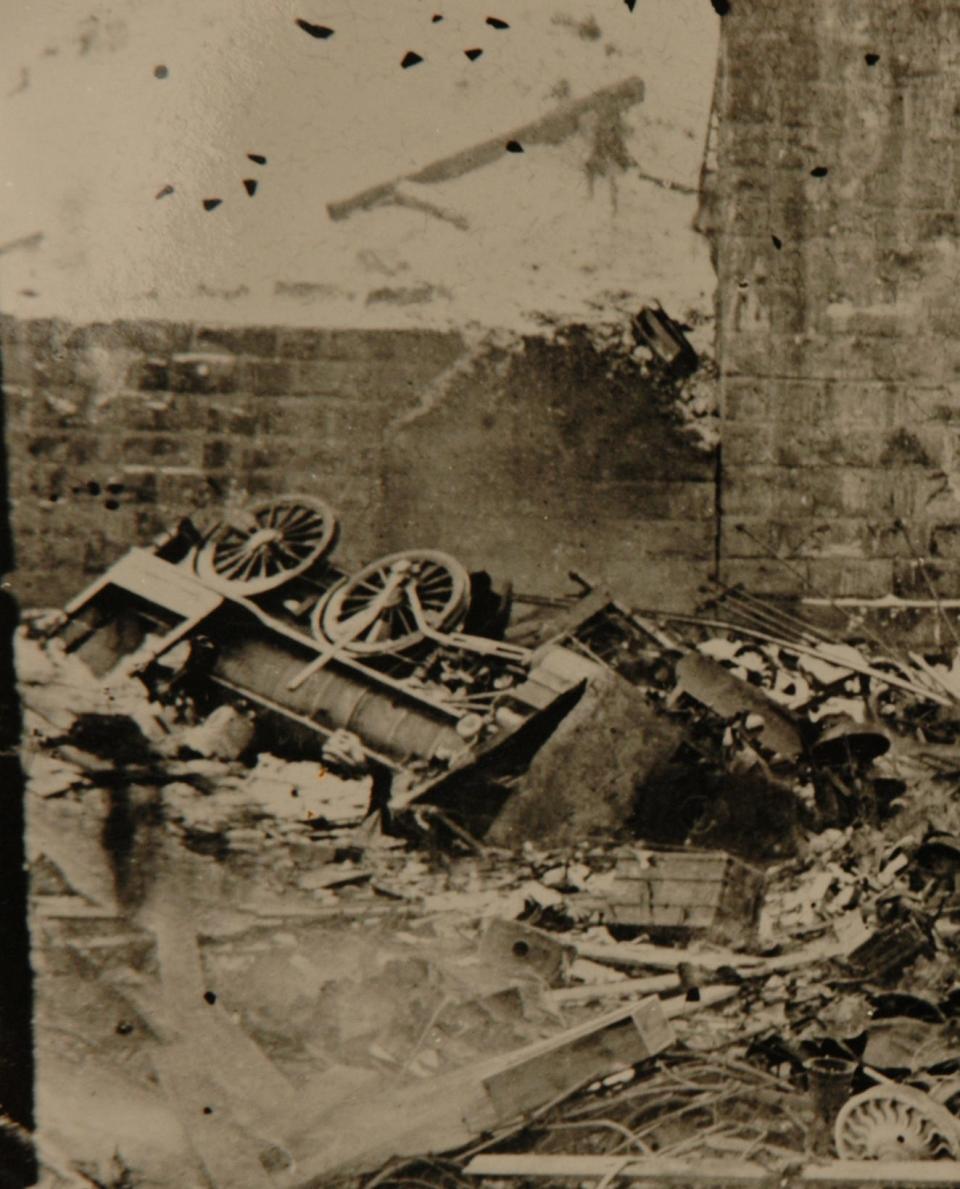
More:Ohio Senate holds first train derailment hearing on East Palestine disaster
50 days of filming and a 21-foot long model train
Making the documentary was a daunting endeavor for the Browns.
Capturing the drama on film required 330 volunteer actors. Fifty days of filming were logged. An elaborately detailed 21-foot long model train was constructed. Telegram tapping on restored equipment replicated the actual message sent the night of the calamity.
A 65-foot long green screen was built for computer-aided scenes. Footage was recorded on trains from the Strasburg Rail Road in Pennsylvania to resemble the bygone era. A miniature replica of the bridge and abutment were constructed by Mainline Bridges.
"It was blood, sweat and tears," Patti Brown said. "It consumed us."
More:'Disaster that could have been prevented'
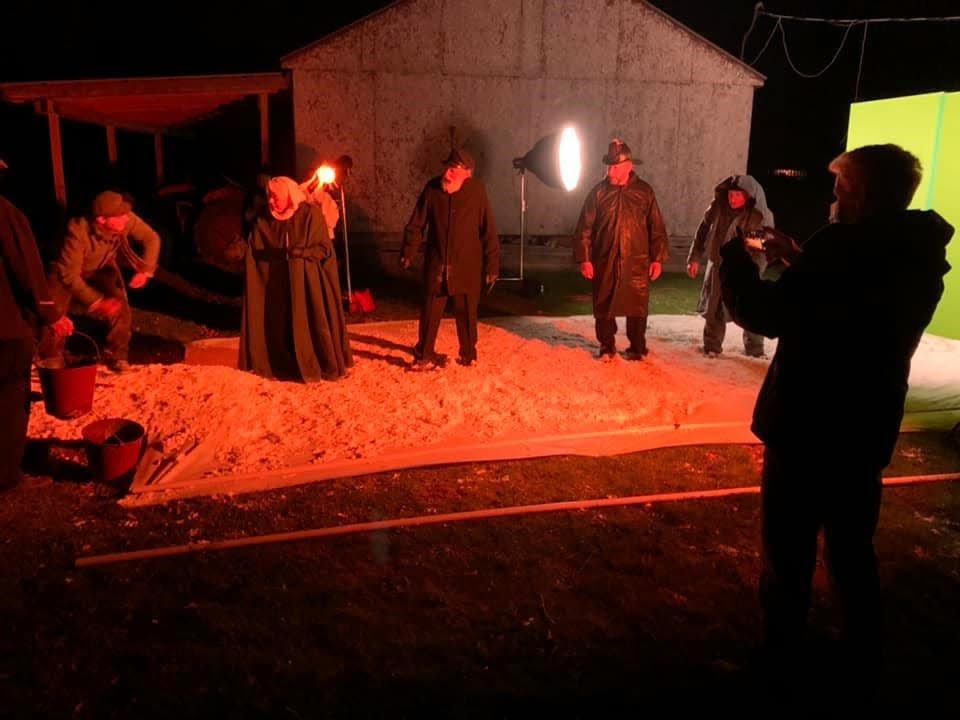
The script was rewritten to give the piece more national appeal for PBS viewers. Hopes for a large grant through the National Endowment for the Humanities didn't materialize. Location fees, costume costs, catering and other expenses were piling up.
The pandemic interrupted filming. The couple's personal finances were strained. All of the filming was done with a single Canon C100 camera.
"We were in doubt," Patti Brown said of the project's future at one point.
But they kept pushing and working, aided by a Robert S. Morrison Foundation grant.
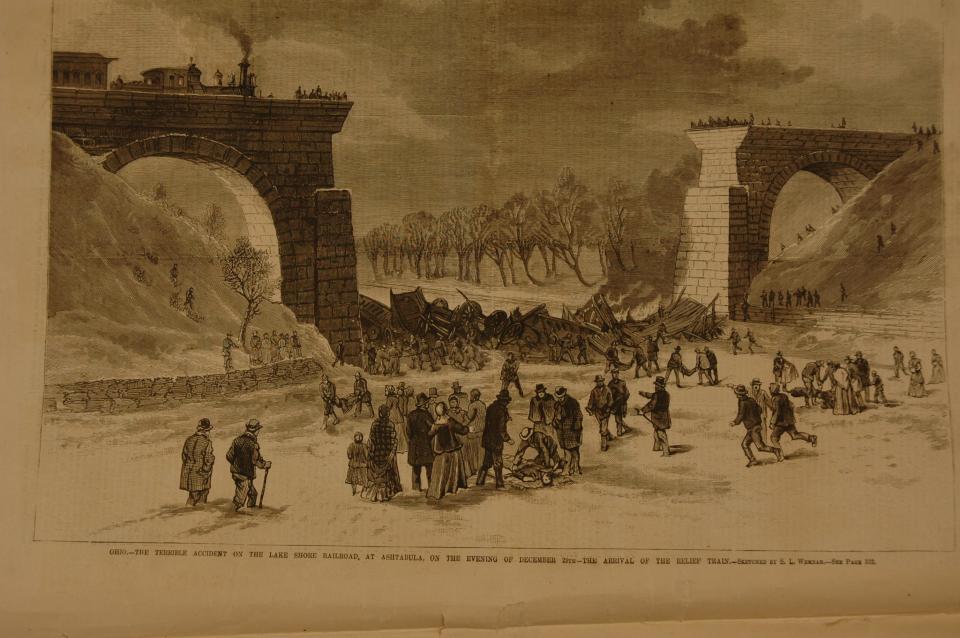
"Patti and I felt this was a story that needed to be told ... and we also wanted to do it right," Len Brown said.
"It has to entertain, educate and inspire," he said of the Beacon Productions film. "Patti and I wanted to do something that was educational and could teach people something.
"There had never been a documentary done on this story," said Brown, who owns the video production company. "And it was producer gold."
'Lost in the pages of American history'
"Engineering Tragedy: The Ashtabula Train Disaster" has been broadcast on sponsoring PBS station WQLN in Erie, Pennsylvania. And it's expected to be shown on Northeast Ohio PBS stations this spring. Broadcast dates have not been set.
Len Brown already had directed and produced history-based documentaries for PBS, including "Ships of the Great Lakes" in 2010.
Patti Brown is an instructional designer in Stark State's online learning department, eStarkState.
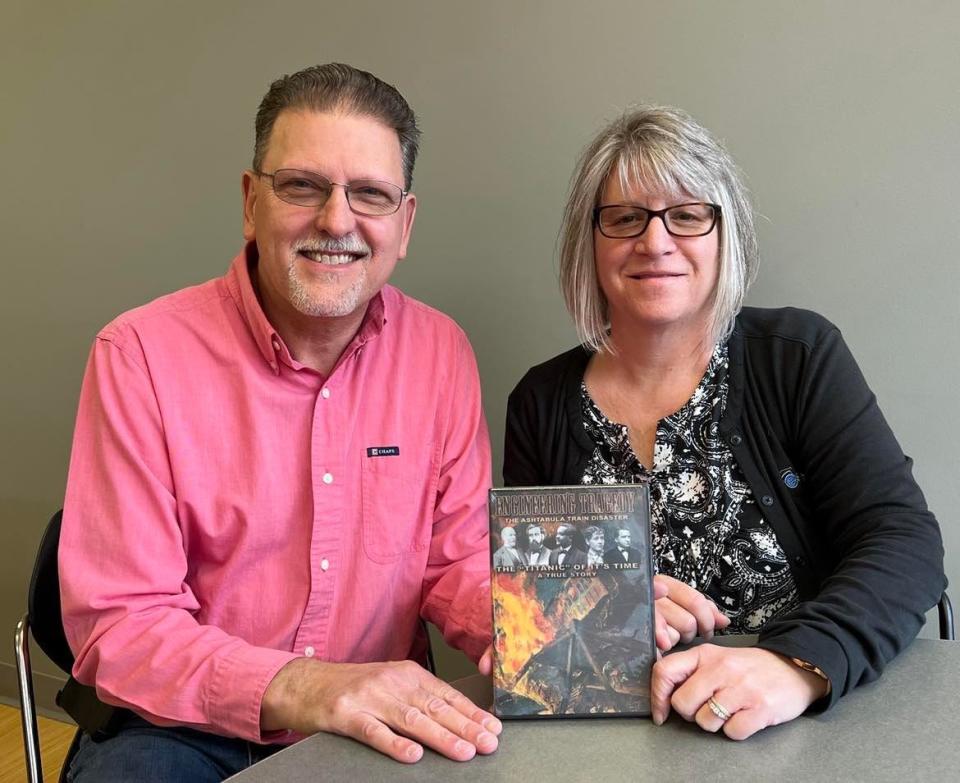
The couple, serving as co-producers, writers and directors of the film, said they chose the Ashtabula train disaster because with the exception of a book, "Bliss and Tragedy," there wasn't a lot known about it. And because of its mystique as the Pacific Express train was the 19th century's railroad equivalent of the Titanic, Len Brown said.
The coal-fueled steam train had two express cars, two baggage cars, two day-passenger coaches, a smoking car and a drawing-room car. Mahogany paneling and embroidered tapestry were among the stylistic features.
The final script for the documentary was written by the Browns and David Simmons, president of the Ohio Historic Bridge Association.
"This was a story that was lost in the pages of American history but was extremely important in the changes it brought about (with bridge building codes)," Len Brown said.
More:'Most memorable year of my life.' Vietnam vet and Stark State recall fallen in documentary
Prior to the Ashtabula crash, bridge construction was largely based on modeling. Afterwards, the field shifted to empirical science, he said.
"The whole occupation of engineering consultation was a direct result of this disaster," Len Brown said.
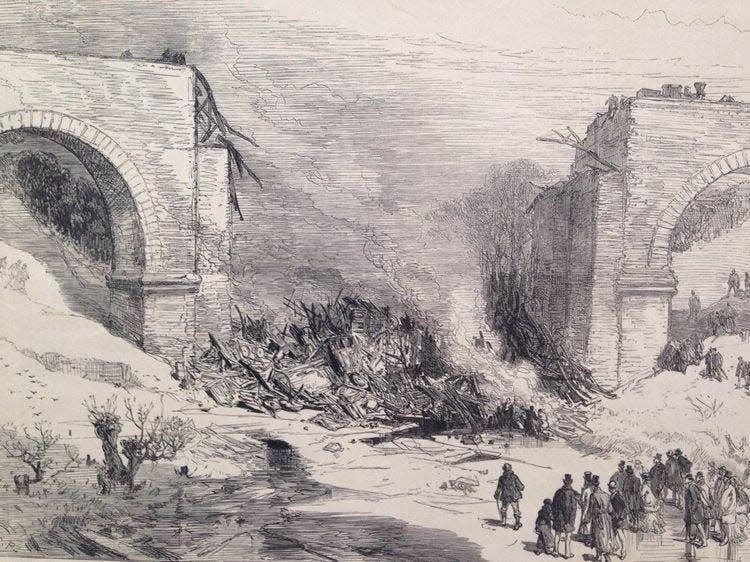
More tragedy follows
More tragedy followed in the wake of the disaster, including the shooting death of chief railroad engineer Charles Collins days after he had testified before a special committee of the Ohio legislature about his role in the bridge collapse.
Bringing the story fully to life with volunteer actors, re-enactments and period sets and dress was important in order to convey the drama and emotion, Patti Brown said.
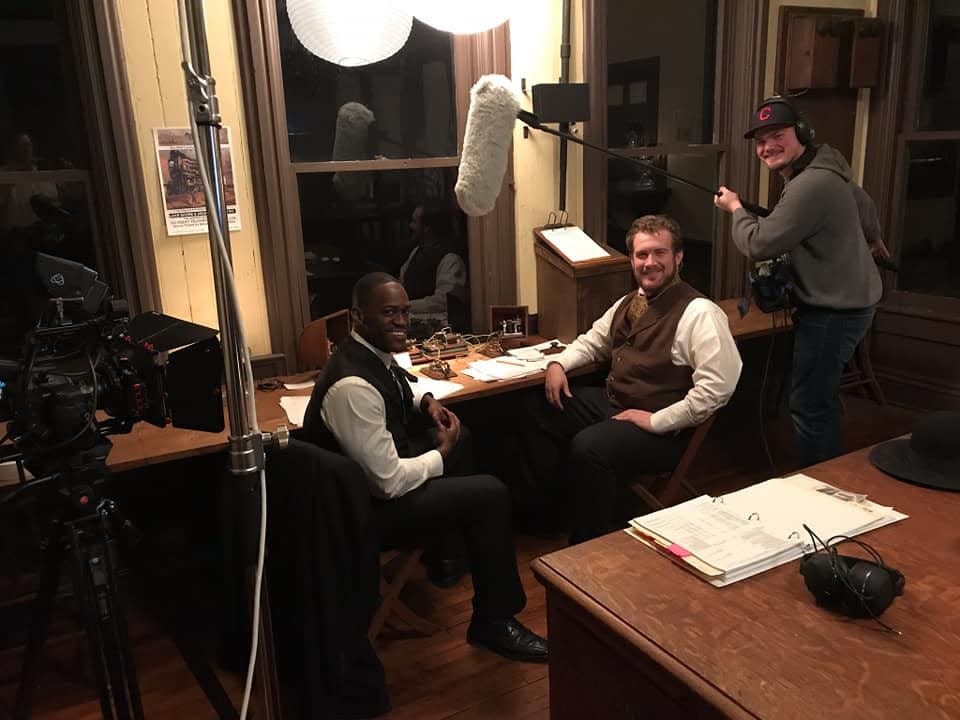
"It's a very, very sad story," she said. "It wasn't just an event; people died. Errors were made. We try to be fair about what happened, but it was truly a tragedy. And it could have been prevented."
Support from the Ashtabula community, including The Ashtabula Foundation, was integral to the film project, Brown said. Distant relatives of some of the historical figures in the event appear on screen.
Filming locations included the Five Oaks mansion on Massillon's historic Fourth Street NE, Williamsfield, Ohio and Strasburg in Lancaster County, Pennsylvania.
Stark State College faculty who participated in the film include James Leatherbarrow, Steve Morosko and Linda Morosko, as well as Stark State students who have since graduated.
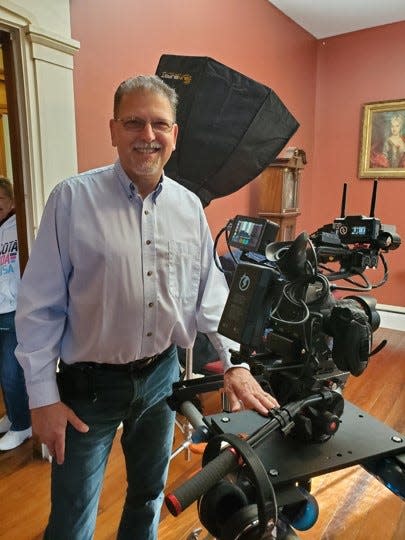
'A story that will be remembered forever'
Engineers have complimented the accuracy and insights of the documentary, Patti Brown said. Others were moved to tears.
Reactions to the film have been overwhelmingly positive. Most special was the hush that fell over the audience during an early screening, she said.
"There wasn't a peep ... for two hours except for a gasp," Brown said.
Len Brown admitted to being nervous about the reception. But "I definitely felt like the weight of the world was lifted off me after we heard the applause − everyone loved it."
Summing up what the documentary means personally, his wife said: "We've done something that is a story that will be remembered forever."
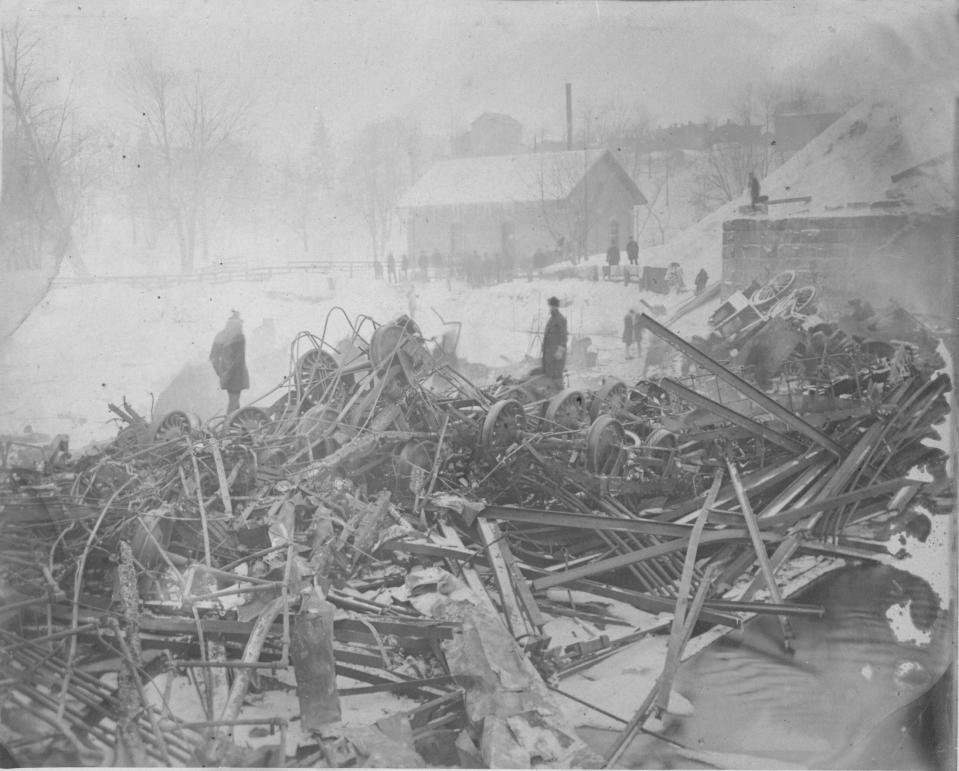
Reach Ed at 330-580-8315 and ebalint@gannett.com
On Twitter @ebalintREP
This article originally appeared on The Repository: Ashtabula, Ohio train crash of 1876 echoes East Palestine disaster

 money
money 